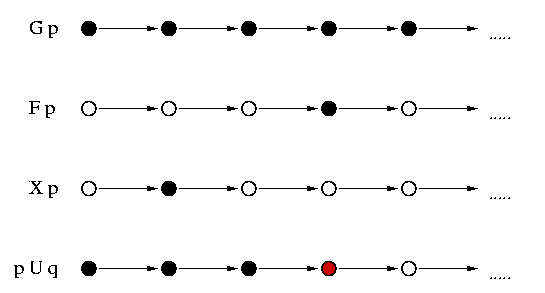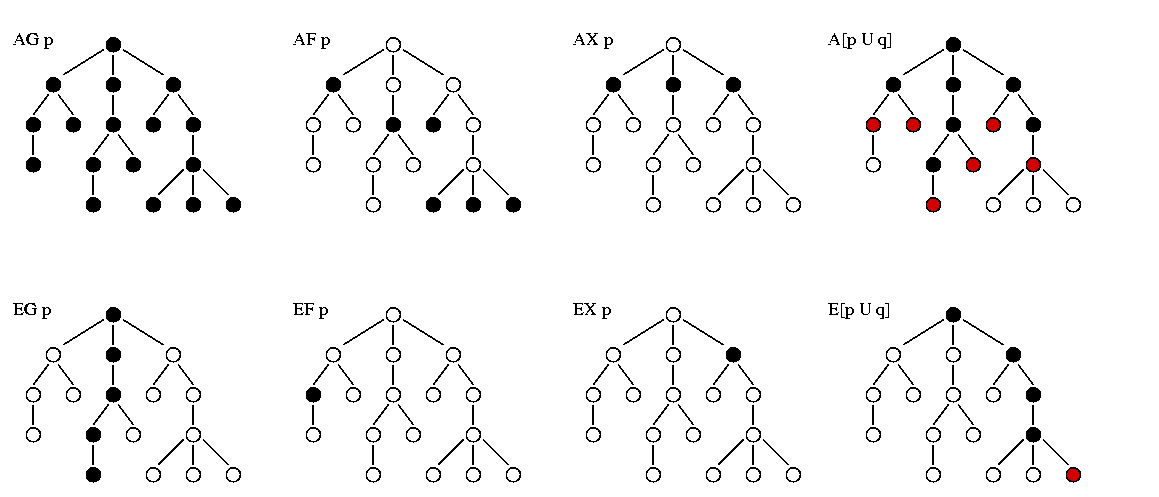 |
|
|||||||||||||||||||||||||||||||||||||||
|
||||||||||||||||||||||||||||||||||||||||
|
Several types of properties can be checked, e.g. deadlock-freeness, reachability, safety and liveness properties. Except for deadlock-freeness these properties will be expressed as formulae. Therefore, this page is structured in two parts:
Describing reachability propertiesFirst we shortly explain our notion of reachability property. It is a statement about states of the system. For example, the mutual exclusion property of critical regions can be understood as reachability property it amounts to the question if there exists a reachable global state of the system in which two processes have entered their critical regions at the same time. These properties can be expressed with so-called state formulae. A state formula is a propositional logic formula consisting of atomic propositions and logical operators. Details about the syntax are shown here.
Describing safety and liveness propertiesSafety and liveness properties will be expressed in terms of temporal logics like CTL and LTL. They are the most popular logics, and together they can express all common safety and liveness properties. A detailed syntax of CTL and LTL is shown here. We shall give a short introduction to LTL and CTL according to [EME90]:
is closely related to branching time logics. The underlying structure of time is assumed to have a branching tree-like nature. It corresponds to an infinite tree where each node may have finitely many successors and must have at least one successor. These trees have a natural correspondence with the computations of concurrent systems or nondeterministic programs. A CTL formula consists of a path quantifier [A (all paths ...), E (it exists a path ...)] followed by an arbitrary linear-time formula, allowing Boolean combinations and nestings of linear-time operators (G, F, X, U).
Selected References
Next chapter: Checking properties
|
| last change
08.05.2003
( |

